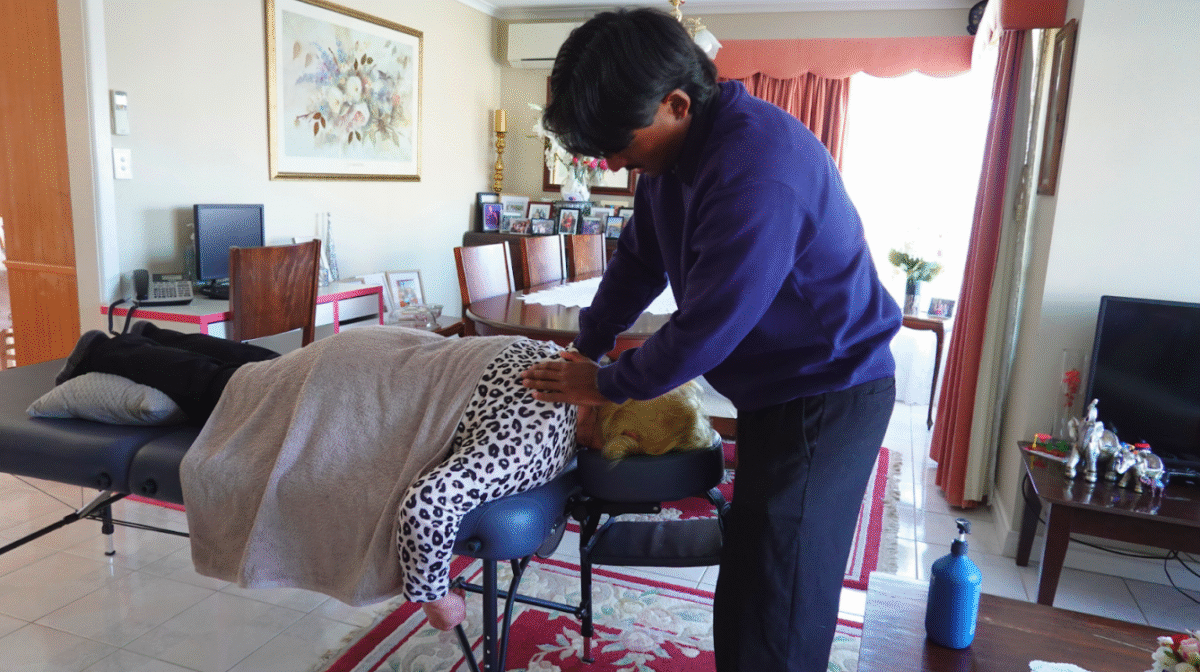Can Physiotherapy Help Sciatica Pain?
“Sciatica” is a term many people use to describe pain that travels from the lower back or buttock down the leg via the path of the sciatic nerve.
It might be accompanied by tingling, numbness or weakness in the leg or foot.
The causes vary: a disc bulge or herniation, nerve root irritation in the lower spine, muscles in the buttock or hip compressing the nerve (eg. piriformis syndrome), or spinal changes like stenosis.
Because the underlying cause can differ, the symptoms and recovery time also vary significantly.

Table of Contents
Is physiotherapy a good option for sciatica?
Yes, in many cases physiotherapy is recommended as a first-line or conservative treatment option for sciatica.
That said, the research shows that while physiotherapy can help, the strength of the evidence is mixed. For example:
A large 2022 systematic review found that for people with clinically diagnosed sciatica, physiotherapy interventions (exercise, manual therapy etc) had no significant difference versus control interventions in the short, medium or long term in many studies.
Other clinical guidance notes that supervised exercise, nerve mobilisations, postural/ergonomic education and staying active are beneficial, but there’s no one single “best” physiotherapy method defined.
Bottom line: Physiotherapy can help, especially when tailored well but its effectiveness depends on the cause, how early you start, your commitment, your overall health / lifestyle, and the specific treatment plan.
How physiotherapy at KHY Physio can help with your sciatica
Here’s how we approach sciatica, especially given we specialise in mobile physiotherapy across Melbourne suburbs (eg. Blackburn, Doncaster, Bulleen, etc).
1. Thorough assessment
We’ll assess your pain, leg symptoms (tingling, numbness, weakness), your movement, posture, sitting/standing habits, work/life triggers.
We’ll check for red flags (eg. bowel/bladder changes, major weakness), which would prompt referral to a specialist.
2. Pain relief & nerve-desensitisation
Use of manual therapy, soft-tissue release, possibly nerve-mobilisation (to help the sciatic nerve move better) and reduce irritation.
Advice on posture, safe movements, what to avoid (prolonged sitting/standing, lifting poorly) and how to manage pain at home (ice/heat, gentle stretching)
3. Mobility & strength restoration
As pain improves, we’ll introduce exercises to restore hip, glute, lumbar spine and leg strength and flexibility.
We’ll work on core stability, hip/glute activation, hamstring/hip flexor mobility (these can all impact the sciatic nerve path).
4. Functional & ergonomic retraining
We don’t stop at “get you pain free”, we aim to get you moving confidently: bending, lifting, twisting safely; back to work, hobbies, everyday life.
We’ll evaluate your ergonomics (desk, driving, standing), sitting habits and movement patterns to reduce risk of recurrence.
5. Prevention of recurrence
You’ll be educated about triggers, what to watch out for, how to maintain a regular movement routine.
We’ll give you a home-exercise plan you can stick with, not just for a few weeks, but as part of your lifestyle.
When physiotherapy might not be enough (and what to watch for)
There are situations where physiotherapy might have limited benefit, or where additional medical intervention is required. For example:
Severe nerve compression: If you have major leg weakness, loss of sensation, or bowel/bladder changes (possible cauda equina syndrome), urgent medical review needed.
Chronic long-standing nerve damage: If symptoms have persisted many months, or nerve damage is severe, outcomes may be slower. Research reflects that improvement in sciatica is often moderate and persistent in some people.
Underlying structural issues: Some people may need further investigation (imaging, specialist referral) if conservative management isn’t improving things.
What you can do now - 5 practical tips
Keep moving – Avoid prolonged bed rest. Gentle walking, small frequent movement breaks are better than sitting for hours.
Watch your posture & sitting habits – Sit with good lumbar support, avoid slouching; change positions frequently.
Begin gentle stretches – Hamstring stretch, hip flexor release, glute activation. (But stop if pain increases significantly).
Avoid aggravating activities – Heavy lifting, prolonged sitting without support, sudden twisting.
Seek physiotherapy early – The sooner you get appropriate assessment and individualised plan, the better the chance of a good outcome.
Why choosing KHY Physio for sciatica support makes sense
We offer mobile physiotherapy in your home: convenient, comfortable, no need to travel when you’re in pain.
We specialise in personalised care, assessment, treatment, education and ongoing support.
Our team is experienced across suburban Melbourne (Blackburn, Doncaster, Bulleen, etc), we know the local community and how to get you moving again.
We focus not just on relief, but on recovery and prevention, so you’re less likely to have a coming-back of symptoms.
👇 Learn more about the benefits of mobile physiotherapy.

Next steps - how to get started
If you’re experiencing leg pain, tingling or weakness down your leg and suspect sciatica, we recommend:
Book a physiotherapy assessment with us at KHY Physio (mobile to your home).
Bring: a list of your symptoms (where they are, when they started, what makes them worse/better), your usual activities (work, sitting, driving, hobbies).
Let us assess, make a plan, and guide you safely back to your comfortable, active life.







